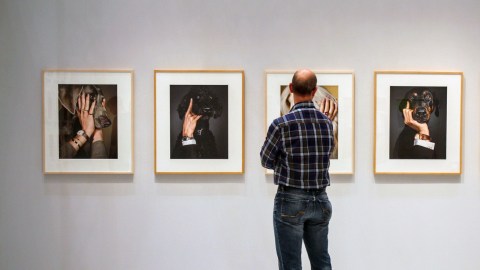How ‘artful thinking’ can improve your visual intelligence

A 2017 study from the University of Pennsylvania shows how principles from the field of visual arts can be successfully applied to medical training to increase observational and descriptive abilities.
Observational skills are critical for medical students and yet students undergo no specific training to develop them. Several medical fields in particular, like ophthalmology and dermatology, are heavily dependent on the doctors’ ability to provide a diagnosis and treatment based on visual examination.
In contrast, art education provides plenty of formal training in visual literacy — the ability to interpret and find meaning in images. With that in mind, researchers from the University of Pennsylvania and Children’s Hospital of Philadelphia collaborated with educators at the Philadelphia Museum of Art to see what happens when medical students undergo training similar to that of art students.
The researchers randomly assigned 36 first-year medical students to an art-training group and a control group. The art-training group received six, 1.5-hour art observation sessions at the Philadelphia Museum of Art. The facilitators used the “Artful Thinking” approach, which focuses on introspection and observation before interpretation.
The results were impressive. Observational skills as measured by description testing improved significantly in the art training group — the students improved their clinical observational skills, as assessed by retinal photographs and photographs of external signs of eye disease.
One student participating in the study said:
“After just one session, I found myself listening to a radiologist discuss the same principles we used to look at art when analyzing a CT scan. Later I found our practice of creating narratives in the art class helped guide me when interacting with standardized patients.”
The researchers conclude that art training alone can help teach medical students to become better clinical observers. Another positive aspect of the finding is that the Artful Thinking course is an easy to implement, low-cost intervention.
The Artful Thinking framework was developed by Harvard Project Zero and the Traverse City, Michigan Area Public Schools. It relies on six “thinking dispositions” or “palettes” — comparing and connecting, exploring viewpoints, finding complexity, observing and describing, questioning and investigating, reasoning.
Each thinking disposition has several thinking routines — short, easy-to-learn mini-strategies that extend and deepen students’ thinking. For example, in the observing and describing disposition, students are encouraged to look at an image quietly for at least 30 seconds, list 10 words or phrases about any aspect of the picture, and then repeat the activity again to find 10 more words or phrases. This routine helps students slow down and make careful, detailed observations by encouraging them to push beyond first impressions and obvious features.

Horace DeLisser, MD, associate dean for Diversity and Inclusion in the Perelman School of Medicine, says about the study:
“It is incredibly encouraging to see that principles from a field, such as art, that can seem so vastly different from medicine, can be so successfully applied and utilized to help improve clinical skills and overall professional development for medical students. We look forward to continuing to see how these principals can be used long-term for medical trainees and practicing physicians.”
Amy E. Herman is the founder and developer of The Art of Perception courses. She trains top officers in the United States military, law enforcement, medicine, education, and industry in how to increase their visual intelligence. In the following video she explains how different aspects of visual intelligence like the “pertinent negative” are relevant to our personal and professional lives.





